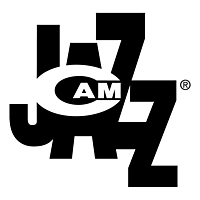Home » Jazz Articles » Live Review » Uri Caine Trio at Bimhuis
Uri Caine Trio at Bimhuis

Courtesy Marija Minevska
Bimhuis
Amsterdam, Netherlands
February 28, 2025
Uri Caine's concert at Bimhuis was nothing short of an exhilarating journey through the vast landscape of jazz. The trio—Caine on piano, Mark Helias on double bass, and Joey Baron on drums—displayed a telepathic level of interplay that kept the audience captivated from start to finish. From the moment they launched into the first piece, it was clear that this performance would be an intricate, dynamic exploration of rhythm, melody, and emotion.
The opening composition was a sprawling, multi-sectioned piece that ebbed and flowed with remarkable fluidity. Caine led the trio through shifting moods and styles, his fingers dancing across the keys with a mix of precision and abandon. Helias, at times plucking with deep resonance and at others drawing his bow across the strings with theatrical flair, provided a rich counterpoint to Caine's melodic lines. Meanwhile, Baron was a force of nature on drums, utilizing sticks, brushes, and even his hands to coax a stunning array of textures from his kit. The trio played with a remarkable sense of timing, creating moments where the pulse seemed to suspend in mid-air before tumbling into the next phrase. Just as the energy of the first piece peaked, they seamlessly transitioned into a tender, melodic ballad. Without pause or announcement, the music softened, and Baron switched to brushes, delicately accentuating Caine's lyrical phrasing. This was one of the concert's many highlights—an emotional moment of reflection amid the trio's more exuberant explorations.
Improvisation played a central role throughout the evening. There were segments where structure gave way to pure musical conversation, at times bordering on controlled chaos. One particularly striking passage saw the musicians deconstruct a piece in real time, breaking it down into fragmented phrases before reassembling it into something entirely new. These moments felt theatrical, like a musical drama unfolding before our eyes. The audience responded with spontaneous applause, acknowledging the sheer inventiveness of what was happening on stage.
One of the standout pieces of the night was "Fidget About Truth," a new composition introduced without fanfare. Inspired by the current political climate, the piece carried a subdued, almost mournful tone. It was atonal and bluesy, unfolding with an air of quiet tension. Helias's basslines added a subtle, foreboding depth, while Baron's drumming was restrained but deeply expressive. This piece, more than any other, demonstrated the trio's ability to channel raw emotion through their instruments.
What makes Caine such a compelling performer is his ability to bridge tradition and modernity. His influences—ranging from classical composers like Mahler and Bach to jazz legends like Thelonious Monk—were evident, yet his playing never felt derivative. Instead, he used these references as launching pads for his own unique explorations. There were hints of Latin rhythms woven into his phrasing, bursts of stride piano playfulness, and moments of free-jazz abandon. He even injected humor, playfully distorting musical quotations in a way that elicited knowing smiles from the audience.
The trio's chemistry was undeniable. Baron and Helias, longtime collaborators with Caine, moved as a unit, instinctively following each other's lead. At one point, Baron took an extended solo, a masterclass in dynamic control, alternating between delicate cymbal work and explosive, polyrhythmic bursts. Helias then joined in, engaging in a riveting duet that was both playful and profound. The audience erupted in applause, recognizing the brilliance of their interaction.
As the evening drew to a close, it was clear that this was more than just a jazz concert—it was an experience, a conversation between three master musicians who understand each other on a deep, almost instinctual level. The trio's final piece carried a sense of finality, as if they were wrapping up a story that had been told through music rather than words. The last day of a tour can sometimes bring a sense of fatigue, but if that was the case here, it was nowhere to be found in their performance. Instead, there was a sense of urgency, of leaving everything on the stage. When the final notes rang out and the audience rose to their feet in appreciation, there was a collective understanding that something special had just taken place.
Uri Caine's trio at Bimhuis was a masterclass in jazz improvisation, emotional storytelling, and technical brilliance. Their ability to seamlessly blend structured compositions with free-flowing improvisation made for an unforgettable night. It was jazz at its most alive—spontaneous, unpredictable, and deeply human.
Tags
Live Review
Uri Caine Trio
Nenad Georgievski
Netherlands
Amsterdam
Mark Helias
Joey Baron
Thelonious Monk
Comments
PREVIOUS / NEXT
Support All About Jazz
 All About Jazz has been a pillar of jazz since 1995, championing it as an art form and, more importantly, supporting the musicians who make it. Our enduring commitment has made "AAJ" one of the most culturally important websites of its kind, read by hundreds of thousands of fans, musicians and industry figures every month.
All About Jazz has been a pillar of jazz since 1995, championing it as an art form and, more importantly, supporting the musicians who make it. Our enduring commitment has made "AAJ" one of the most culturally important websites of its kind, read by hundreds of thousands of fans, musicians and industry figures every month.































